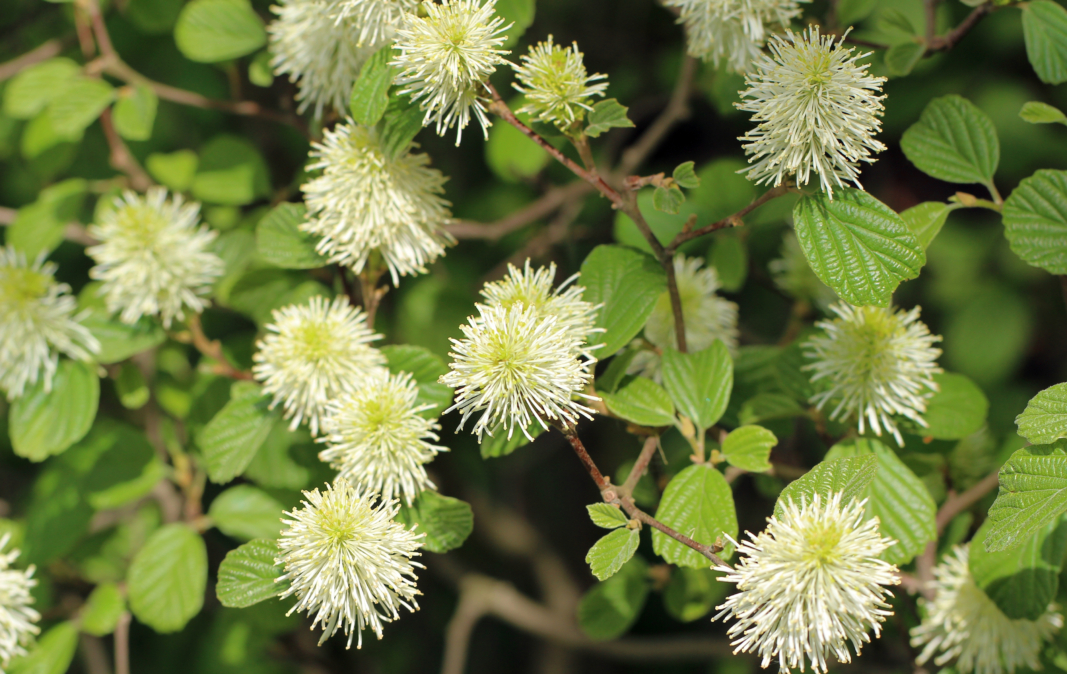 Photo by Bryn Wallace
Photo by Bryn Wallace12 Native Flowering Shrubs
Native flowering shrubs naturally occur all over our Mid Atlantic region and can tolerate all kinds of soil and light conditions. From the versatile clethera to the fruiting highbush blueberry plant, there are plenty of flowering shrubs to choose from. Whether you’re looking for a specimen plant for your yard or a dwarf variety to sneak into your borders, here are a few native shrubs to consider.
Clethra
Clethra plants produce very fragrant summer blooms which come in white or pink colors and look like long spikes of blossoms that grow up to 4 inches long. The flowers open up in mid-summer and are great for pollinators. They can tolerate both wet and dry soil, making them a versatile addition to the landscape. Its foliage is a true, vibrant yellow color, making it a standout landscape plant in the fall season.
Sweetspire
This shrub has creamy white, long stems of blooms and fragrant blooms that emerge in late spring. Its foliage turns bright red in fall and the blossoms are great for pollinators. ‘Little Henry’ is a fun, dwarf variety that can be used anywhere in the landscape as it is a very versatile plant.
Chokeberry
This plant produces white blooms in the spring followed by an abundance of ink-colored fruits that the birds will enjoy. It does well in moist areas and comes in dwarf varieties for smaller spaces.
Witch-Hazel
This Virginia native blooms in fall and is very fragrant. The blossoms are spiky and come in yellow or orange colors. It is good for wet soils and as an understory plant. The native varieties look best as standalone specimen plants, in a grove setting, or at the forest’s edge.
Buttonbush
Buttonbush has spherical, fragrant white blooms that are present from spring through early summer. It is the top pollinator plant in the world, according to Merrifield Garden Center’s Merrifield Plant Specialist and ISA Certified Arborist Michael Fahey, and thrives in wet soil by ponds and streams where the soil is quite damp.
Spicebush
This super fragrant understory NOVA native plant smells and tastes like spicy cinnamon or pumpkin spice. Its foliage is a golden yellow hue and it is a larval host plant for spicebush swallowtail butterflies.
Winterberry
A deciduous holly, winterberry plants lose their leaves in the winter but the female versions of the plants remain covered in bright red berries that last all season and make a great food source for birds. The birds will wait to chew on the fruits until late winter to early March during their early spring waves of migration when the berries are past their peak and wrinkled.
Blackhaw Viburnum
This shrub blooms from late spring to early summer and produces berries in the fall to winter that are attractive to wildlife. The birds will start to eat the fruits when they ripen during the holidays. It is tolerant of most conditions, thriving in both moist and dry soils. Its foliage turns a scarlet-red color in fall, very reminiscent of Japanese maples. It works well as a specimen plant.
Fothergilla
Fothergilla is a fragrant, showy understory plant that blooms in spring and has an attractive fall color. Its textured leaves provide contrast to the forest floor. Its flowers look like white sea anemones with their fuzzy, spiky, clustered blooms.
Deciduous Azalea
These colorful native azaleas produce fragrant blooms and come in several different varieties that can bloom from spring to late summer. Their colors range from pinks to oranges to creamy whites and yellows. They can be used as a shrub or small specimen plant.
Ninebark
These plants have been heavily cultivated for their foliage color, which can range from deep purple to gold and amber. They can tolerate a variety of conditions, including full sun, dry soils and wet soils. Their blooms come in clusters of creamy white flowers and the plants can be found growing natively all over Great Falls, Virginia.
Highbush Blueberry
Blueberry bushes can be found growing locally and can reach up to 6 feet tall in some areas. They have attractive clusters of white flowers that turn pinkish at the base of the buds. You can harvest the berries for your own culinary use when they are ripe. The bushes are attractive to birds, so if you want to have the berries for your own use, you can add netting over the plant to keep the birds away.


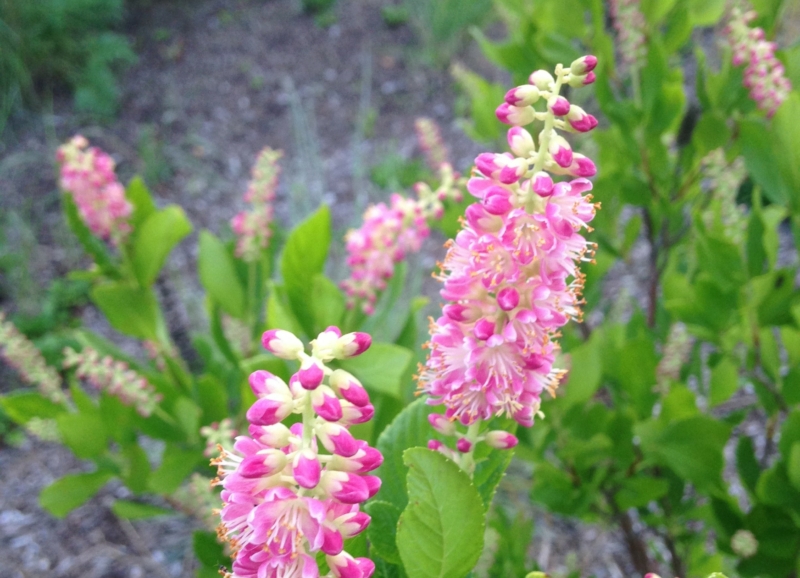
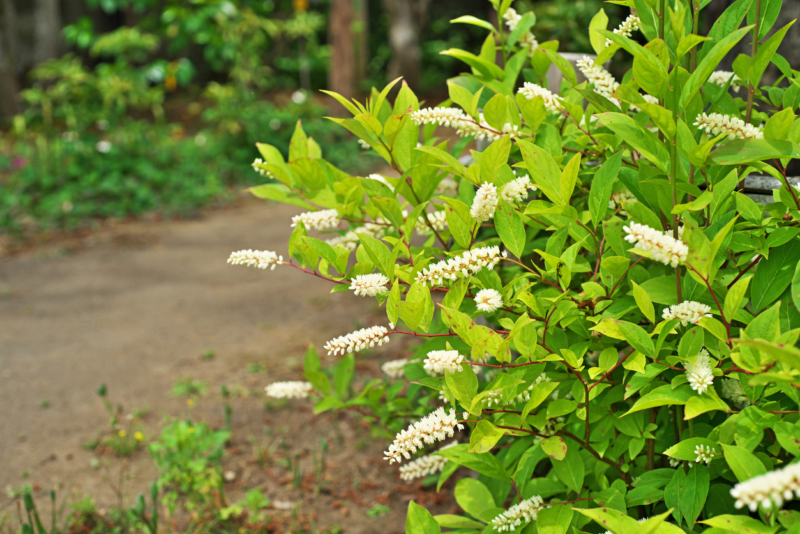
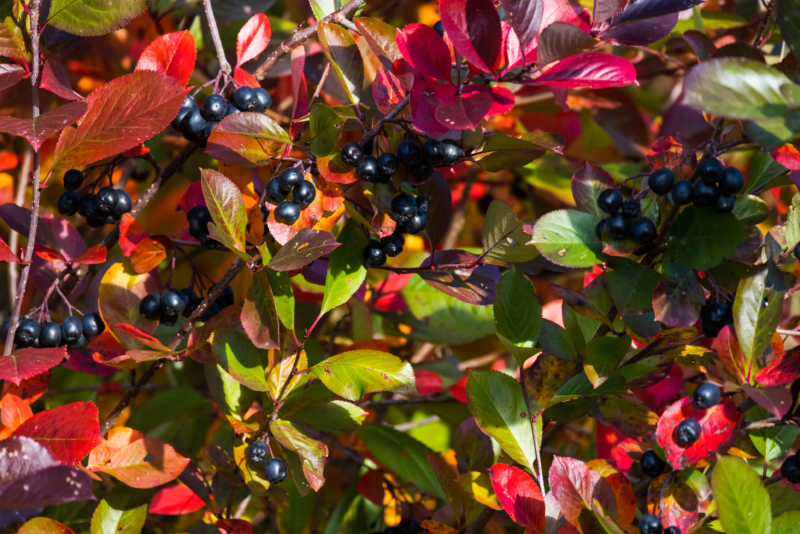
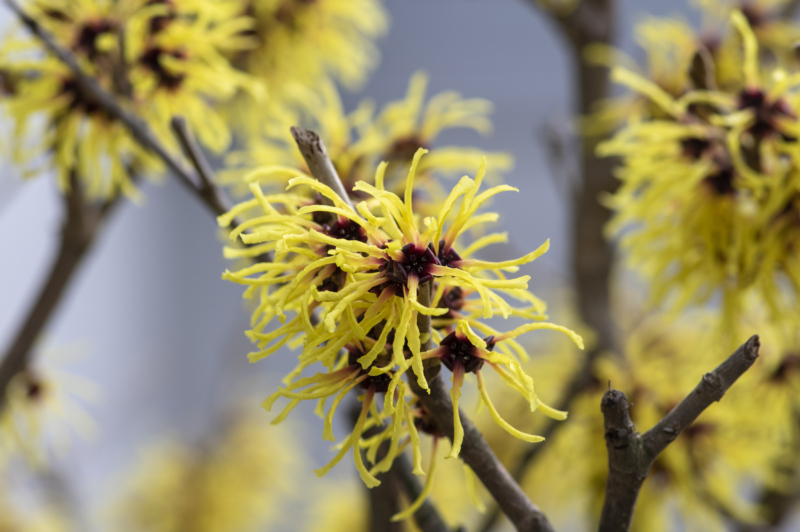
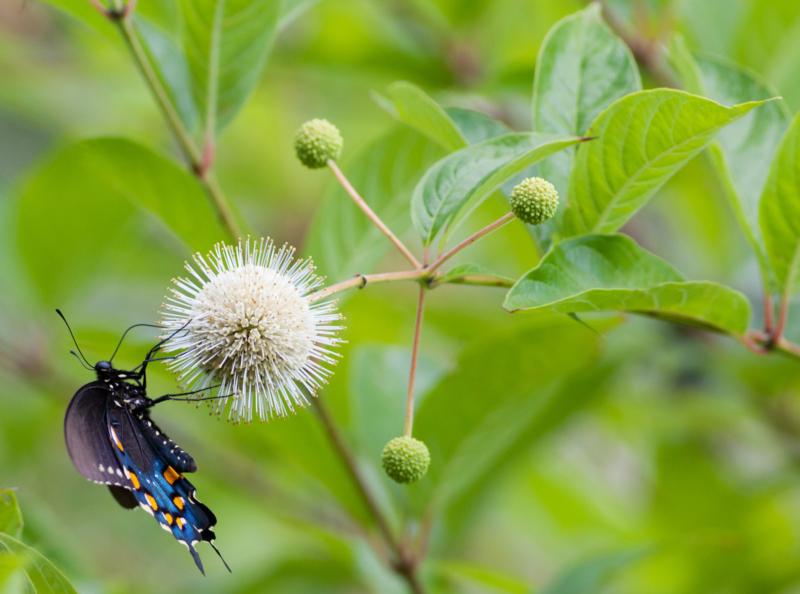
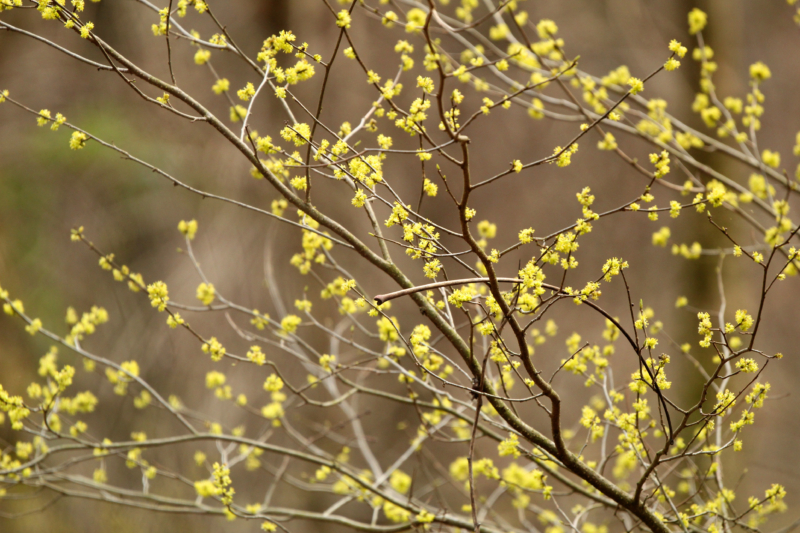
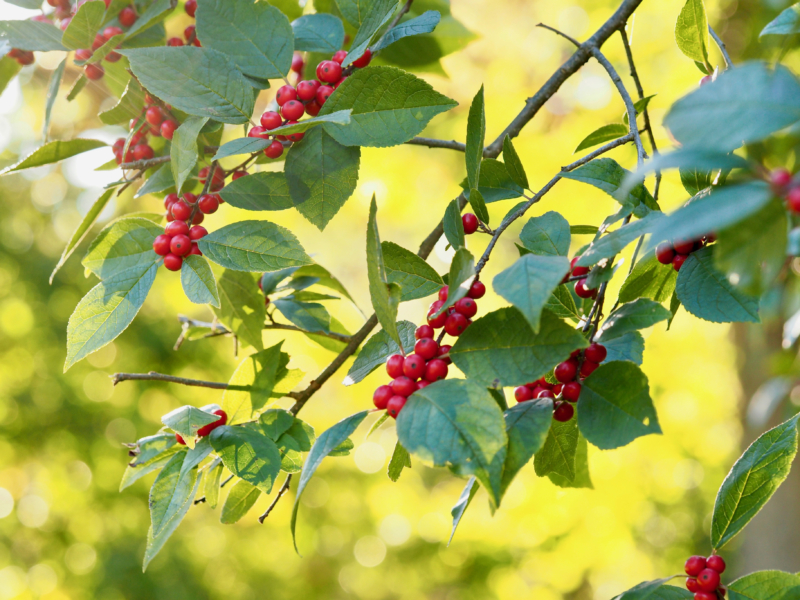
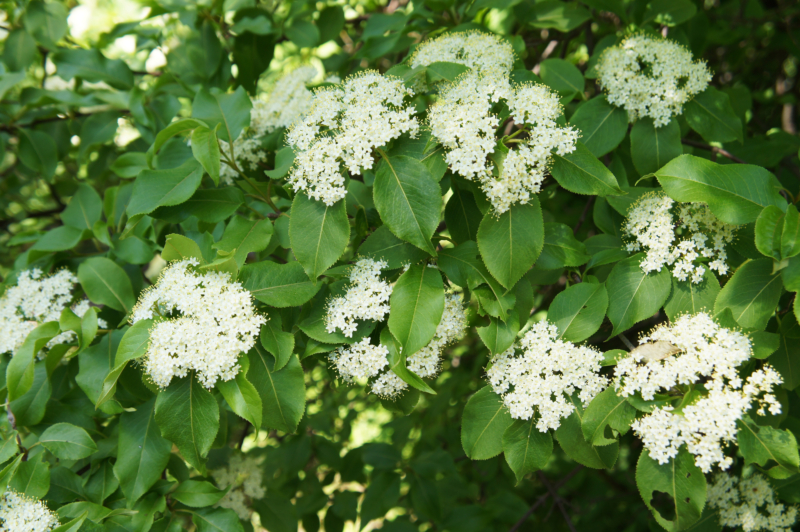
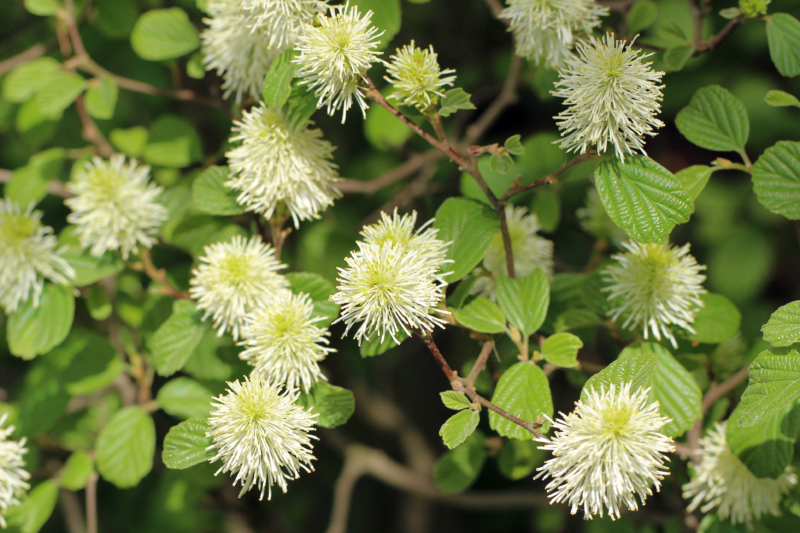
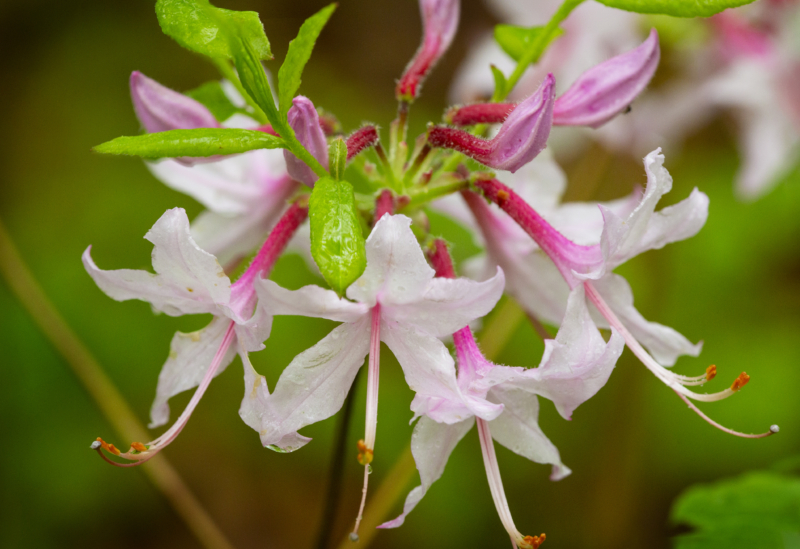
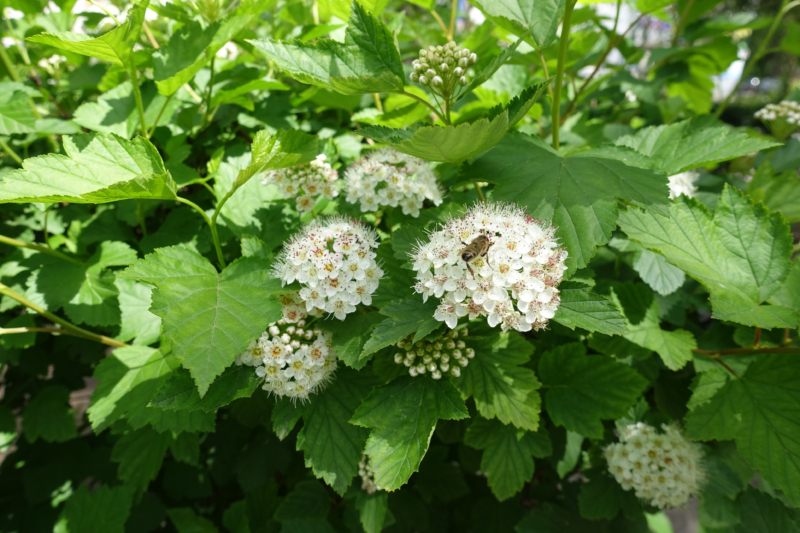
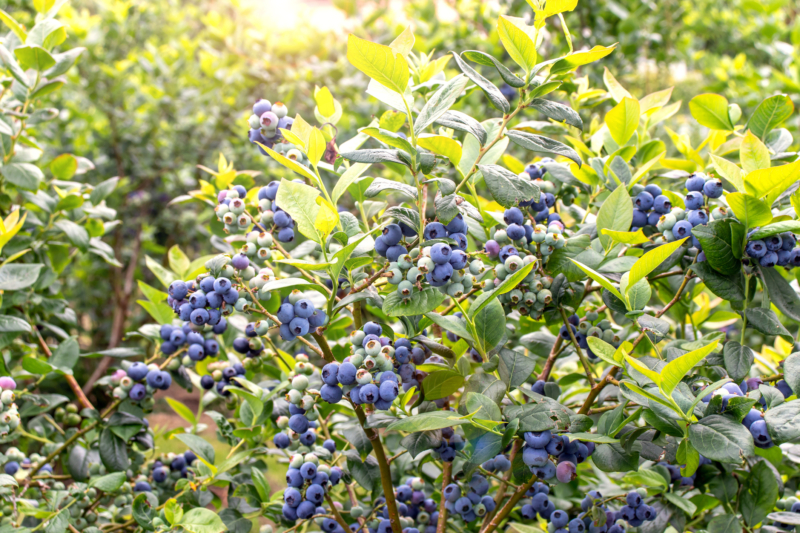
 Photo by Bryn Wallace
Photo by Bryn Wallace